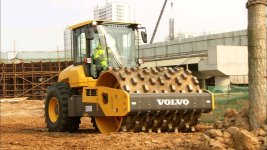MasseyFerg231
Silver Member
- Joined
- Jun 15, 2021
- Messages
- 141
- Tractor
- Massey Ferguson 231 w/232 FEL
Helical piers are an excellent option for the post bases. I would forgo the slab for a few years to see what happens.
If you have a geotechnical engineer nearby, have them come and take a proctor and do a few penetrometer tests or nuclear density tests.
If you have a geotechnical engineer nearby, have them come and take a proctor and do a few penetrometer tests or nuclear density tests.

